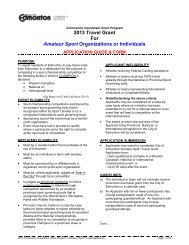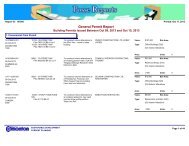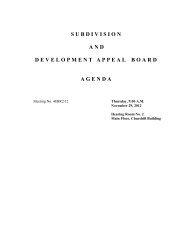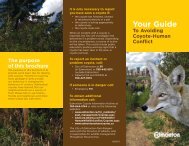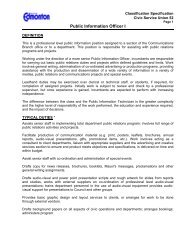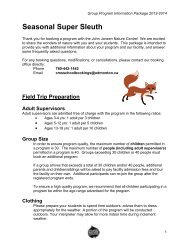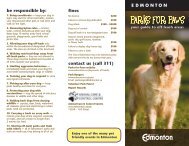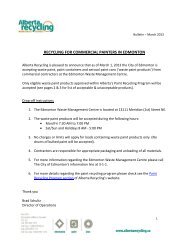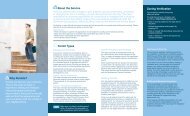Alberta Invasive Plant Identification Guide
Alberta Invasive Plant Identification Guide
Alberta Invasive Plant Identification Guide
Create successful ePaper yourself
Turn your PDF publications into a flip-book with our unique Google optimized e-Paper software.
Knotweed Complex<br />
Fallopia spp./ Polygonum, Polygonaceae (Knotweed Family)<br />
Category: Prohibited Noxious<br />
Knotweed, Giant — Fallopia sachalinensis<br />
knotweed, hybrid Japanese — Fallopia x bohemica<br />
knotweed, Japanese — Fallopia japonica<br />
Life Cycle: Herbaceous perennial.<br />
Root: Rhizomatous.<br />
Leaves: Alternate, stalked, broadly oval to triangular and pointed at the<br />
tip. Giant knotweed leaves are 30cm or longer and 2/3 as wide. Japanese<br />
knotweed leaves are 15cm long by 7-10cm wide. Himalayan knotweed<br />
leaves are 10-20cm long with tapered and elongated tips, basal leaves<br />
slightly heart-shaped, and often with soft hairs on veins, margins and<br />
lower surfaces.<br />
Stems: Hollow, smooth, weakly woody, jointed, swollen at nodes, 3.5m or<br />
taller, base surrounded by membranous sheath.<br />
Flower: Small greenish white flowers in sprays at branch tip. Japanese<br />
knotweed inflorescence is larger than that of giant knotweed; the flowers<br />
are prominently winged, and their size increases significantly with age.<br />
Seed/Fruit: Black with ribs.<br />
Toxic: Horses, cattle, goats.<br />
37




